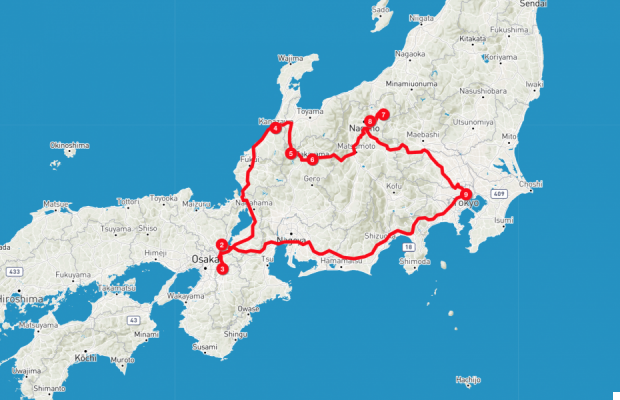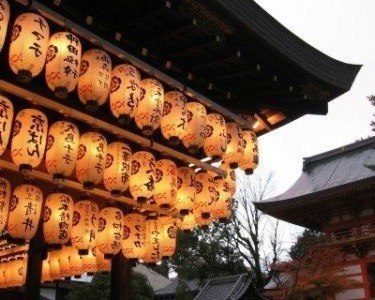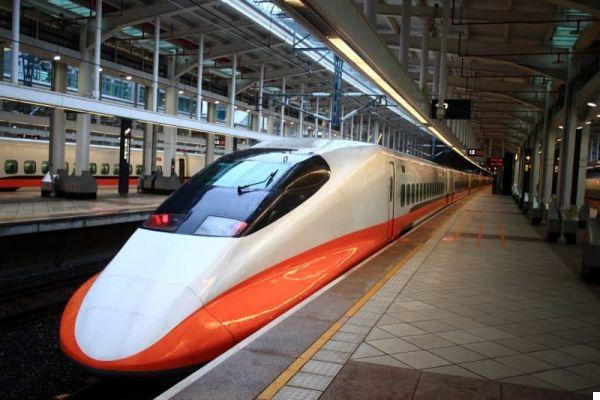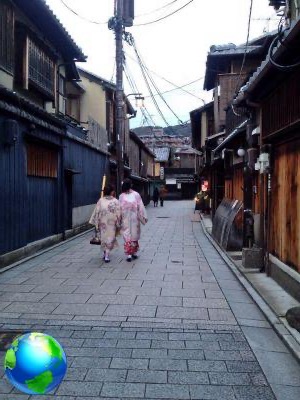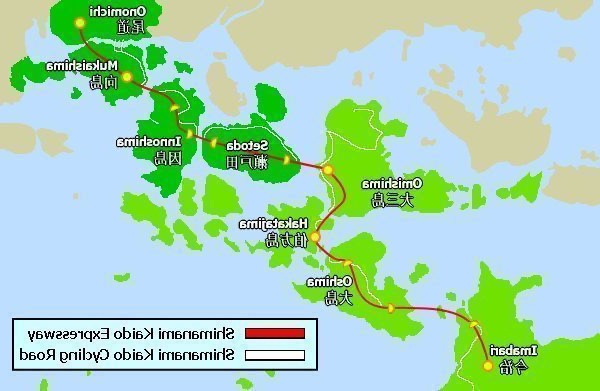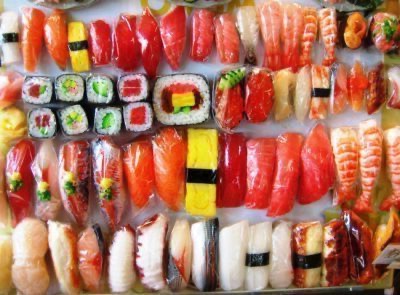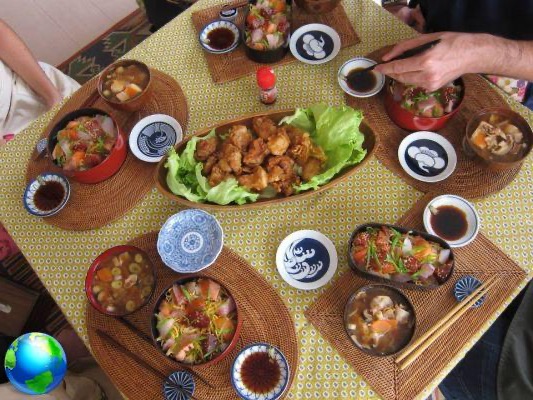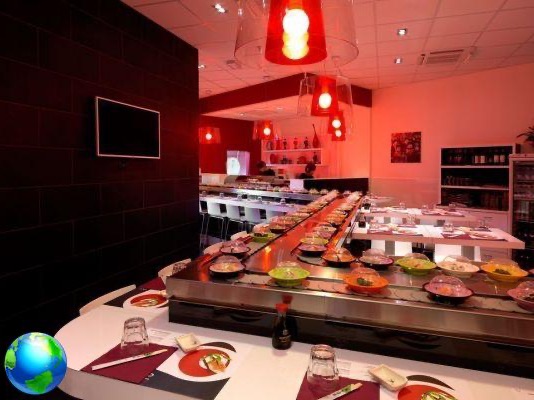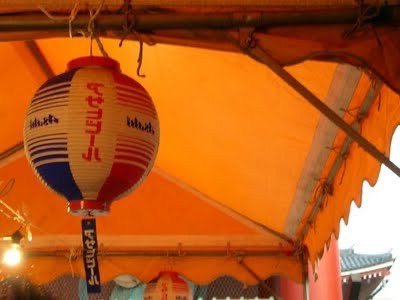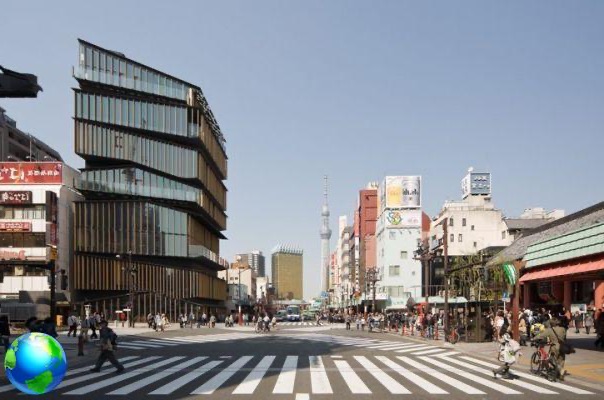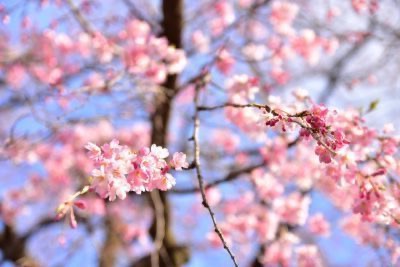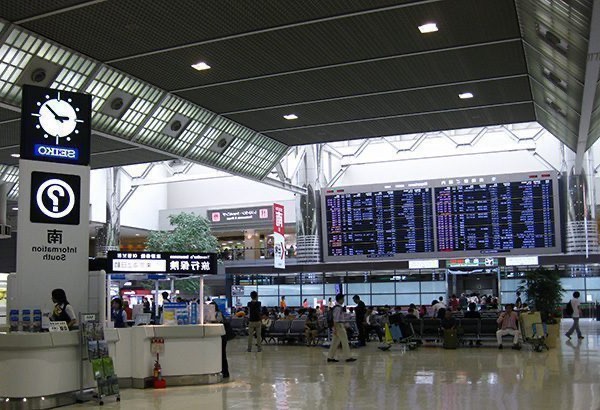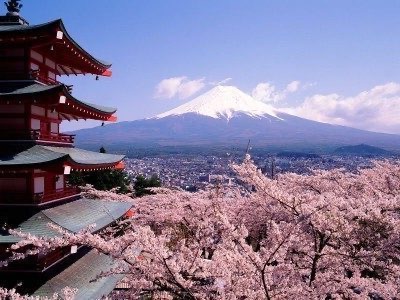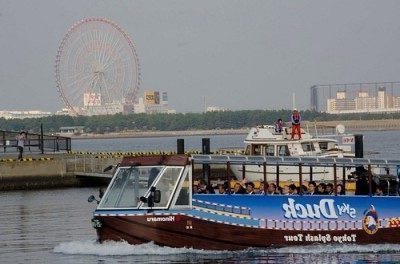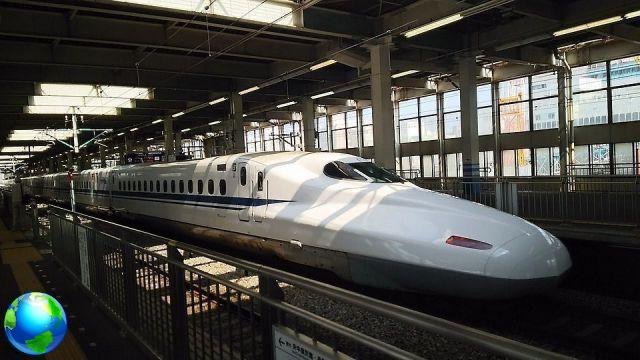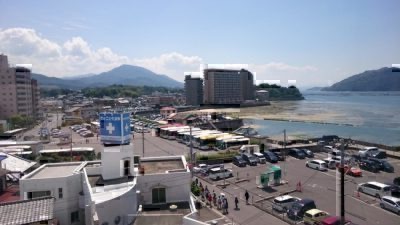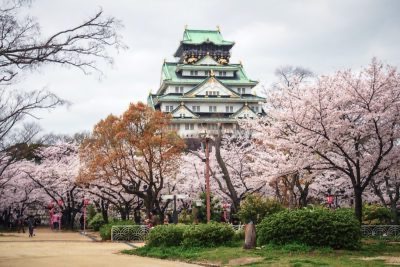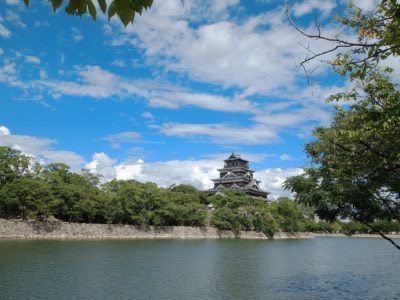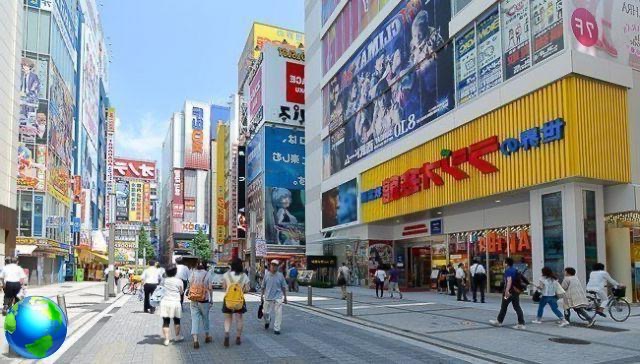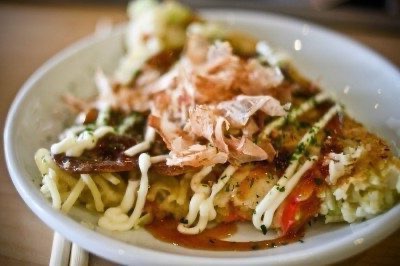Japan it is one of those countries that scares many when it comes to organizing a do-it-yourself trip; I myself have to admit that I studied a lot more before leaving than on other trips, but I later discovered when I was there that it is a really easy country to travel to. The language barrier is ultimately a false myth: not that the Japanese have learned to speak English eh, but they are equipped with the signs and signs and go out of their way to help anyone. Compared to a few years ago I think a lot has changed, it's all (or almost) also written in our alphabet, it's super integrated with Google Maps (per second!) And with our banking systems. Having said that, it is better to know a few things before leaving for Japan, to be able to organize the trip in the best possible way.
When to go to Japan
Given its geographic conformation, the weather conditions vary greatly depending on the area and the coast. On the Sea of Japan in winter it gets much colder and snows, while on the Pacific coast the days are much drier and clearer. Apart from the two extremes, the islands of Okinawa to the south (which have a subtropical climate and it is hot all year round) and the region ofHokkaido to the north (where it is recommended to come between spring and autumn, unless you are interested in skiing), throughout the central part of the country (and especially for the classic tourist resorts of Tokyo, Kyoto, Osaka, etc.) the seasons are 4. In winter the temperatures are cold and the skies are more or less clear depending on the coast. In spring the days become gradually warmer and there is the show of cherry trees in bloom (the so-called hanami or sakura) between March and early April (you can monitor it from this site); this is the most expensive and busiest time of the year to visit Tokyo and all of Japan. Summer is, on the other hand, the least suitable period to travel in most of the country because the temperatures are very high, as well as the humidity, and it rains a lot especially between June and mid-July. Finally, autumn it is an excellent choice because it guarantees mild and sunny days and the spectacle of foliage. On this site you will find the weather forecasts divided by regions.
Documents required to enter Japan
To enter Japan it is sufficient to have a passport valid for the duration of the trip and a return flight ticket.Spanish citizens can enter Japan without a visa for tourism purposes and for a maximum of 90 days. For stays longer than 90 days it is instead necessary to obtain a visa, which can be requested at the Japanese Embassy in Rome or at the Japanese Consulate in Milan.
Time zone of Japan
Japan is located in + 8h compared to Spain.
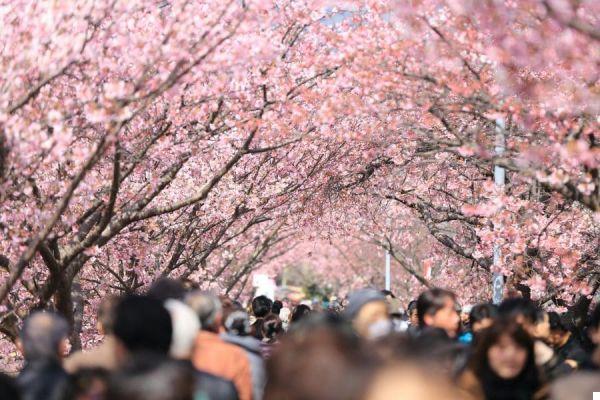
Do our credit cards work in Japan?
Finally we can say yes! Compared to a few years ago, now the main credit cards (VISA, Mastercard and American Express) work for both withdrawing and paying. To withdraw, go to one of the many ATMs located inside the mini-markets (7 Eleven, Dowson, etc. are everywhere) or in the post offices. It may happen that you are unable to withdraw in one, but in the one next to it, yes, so insist. Even in restaurants and hotels, you can easily pay with cards. If you are looking for exchange offices, you will find them almost exclusively at airports. An alternative is also to leave directly from Spain with the yen (it is possible to order them in all banks).
Internet and wifi: how to rent a pocket wifi or a sim in Japan
To be able to move more easily (as well as to always be connected if you need it), it is good rent a Pocket wifi (to which several phones / devices can be connected) before starting from one of the many websites. I have used this site and I was happy with it. Choose the duration of the rental and the possibility of picking it up directly at the hotel for the first night (best choice), or pick it up at the airport once you arrive (but you will have to check which terminal is the counter). The price is around 50 euros for 7 days or 70 for 2 weeks (but you can choose the exact number of days). At the end of the journey you can then post it in the normal post office boxes inside the airport by inserting it in the envelope that they will have given you at the beginning. Just order it 6-7 days before you leave. If you are alone and you don't need to have wifi on other devices (computer, ipad, etc.), you can too simply buy a SIM At the airport. They are 1.5 gigabytes for about 2200 Yen (data only - about 18 euros).
How to get around Japan: the Japan Rail Pass
On this subject, I refer you to the article I have already written How to get around Japan: all you need to know about the Japan Rail Pass, the metro, buses, internal flights and taxis.
How much does a trip to Japan cost?
Also on this issue you will find everything in the article How much does a trip to Japan cost?
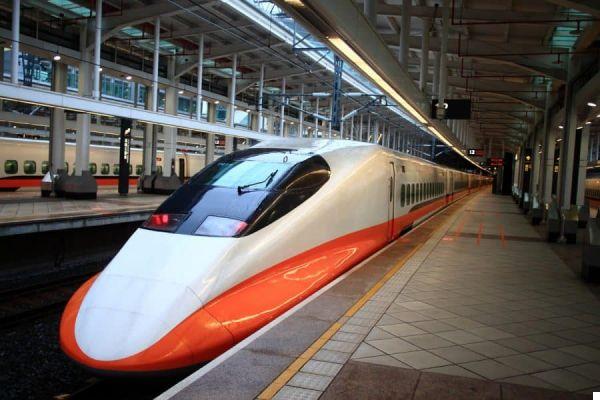
Health insurance
In Japan our health coverage is not valid. My advice is to always take a classic medical-luggage insurance that can cover you during the trip. I am very happy with many insurance companies, a site that compares the policies of different companies and proposes the most convenient policy for that particular trip. To do this you will have to enter the data relating to your trip (country, duration, etc.) and they will send you an email with the best proposal that you can then buy directly online.
Electricity in Japan
Le thorns are like American ones, with two flat poles, e the current is 100V (so everything takes twice as much to charge).
Where to sleep in Japan (ryokan, capsules, temples and shrines, etc.)
In addition to the classic Western-style hotels and hostels, in Japan you can also experience the thrill of sleeping in some types of accommodation that are a bit special such as capsule hotels, ryokans, love hotels or temples. In general, keep in mind that wherever you decide to go to sleep the spaces will be restricted, much smaller than the rooms we are used to, so my advice is to travel with a backpack, and not with a suitcase, because you will never have it. enough space to open it (if not on the bed!). Another thing, both in the hotels and in the other structures you will always find shampoo, conditioner, various face / body creams, slippers and (almost always) even the hairdryer so don't bring anything! But let's see the various types:
- Capsule Hotel: the name says it all! They are frequented above all by commuters, but also by foreigners who travel low-budget, and you sleep in "capsules" precisely of 2m x 1m x 1m inside which there is a TV, telephone, linen, etc. Often they are reserved only for men.
- Love hotel: the Japanese version of motels. There are many and of all kinds.
- Ryokan: they are traditional Japanese inns but often cost like 5 star or more. The rooms are bare with a low table, cushions on the floor and the bed that is only put on the floor in the evening. Meals (at least dinner) are usually included. It is an experience to do at least for one night! On this site you will find many at a good price.
- Temples and shrines: some Buddhist temples and Shinto shrines receive guests. They are Spartan lodgings where breakfast is included and where you can attend morning prayers. Some of these are found in the same site dei ryokan.
Where I slept in Japan
- Bunka Hostel (Tokyo – Asakusa): minimal but well-equipped hostel with a nice bar that is also very popular with outsiders.
- Hotel Felice Akasaka (Tokyo- Akasaka): minimal and design hotel in a beautiful street, convenient for getting around on foot and with onsen and spa inside.
- Bell tree (Hakone): a kind of country house, very nice and with a private onsen. The owner is of an absolute kindness. Very bucolic, highly recommended!
- Hotel She Kyoto (Kyoto): super central hotel, very nice and very convenient, both for getting around on foot and by metro.
- APA Hotel Hiroshima-Ekimae Ohasi (Hiroshima): modern and full optional hotel (onsen and spa). It is opposite the station and is also perfect for taking the tram and getting to the ferry to Miyajima.
- Hotel Keihan Yodoyabashi (Osaka): modern, beautiful and convenient hotel for getting around both on foot and by metro. Excellent breakfast and the fact that they leave a thousand samples of everything available.
- Hotel Pacific (Kanazawa): small but very nice hotel near the gardens and the market. They also rent bikes.
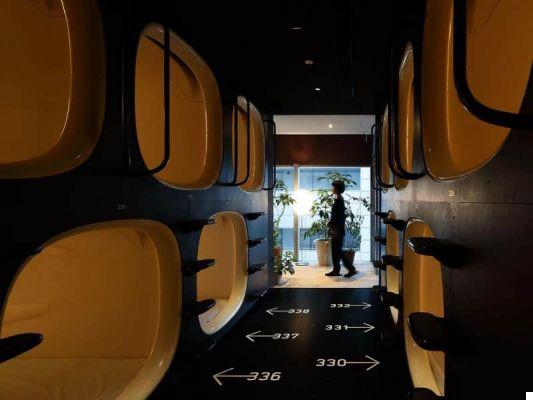
The rules in Japan: do / do not
- NO you smoke outdoors. Along the streets you will see transparent boxes and you can only smoke in there.
- NO blowing one's nose in public (considered extremely rude)
- NO you never scream! Especially on means of transport (where we don't even talk about it). The Japanese always speak in a low voice (it's heaven!)
- NO one exchanges effusions in public: no lemons!
- NO we talk on mobile phones in means of transport
- NO you eat while walking and don't eat on the subway (on the train yes)
- NO the door of the taxi never opens, it is automatic!
- SI they always queue (don't let yourself be recognized!)
Travel itineraries in Japan of 1, 2 or 3 weeks
Obviously the possibilities are almost endless! I simply point out the most "classic" itineraries.
- 1 week itinerary: Tokyo (e dintorni), Kyoto e Nara
- 2 week itinerary: Option 1) Tokyo, Kyoto, Nara, Osaka, Kobe, Himeji, Okayama, Hiroshima – Option 2) Tokyo, Kyoto, Nara, Kanazawa, Shirakawa-Go, Takayama, Nagano
- 3 week itinerary: To the itineraries indicated above you can add days of relaxation in the Okinawa archipelago, or immerse yourself in the nature of the Hokkaido parks to the north.
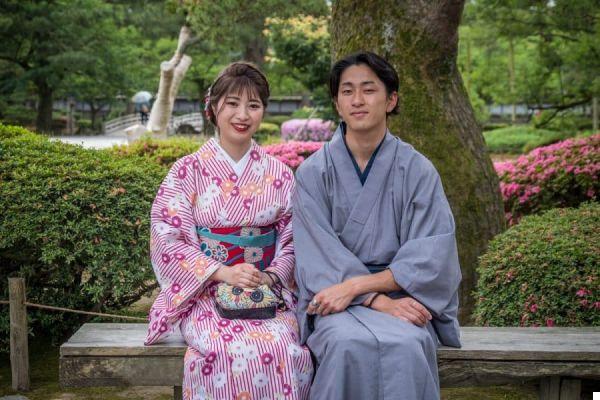
What is eaten in Japan
The premise is that Japanese cuisine is probably (at least for me) the best in the world. In Japan the gastronomic offer is really wide !! You can spend a few euros or thousands, there is everything! All this to say that, if you want, you can also spend very little. Among the most typical things that you can understand about eating are:
- Teishoku (menù fissi): Japanese people are crazy about combined dishes consisting of a main course (which can be meat, rice, pasta or fish) and 3/4 bowls of miso soup and other local delicacies and these combo dishes usually cost less than 10 euro and fill a lot.
- Noodles (ramen, udon e soba): ramen are durum wheat and are served in broth (which can be of various types) along with various other things (meat, eggs, vegetables, seaweed, etc.). Udon are thicker noodles than wheat flour and are served both hot and cold, like soba, but they are made of dark buckwheat flour.
- Sushi: obviously another planet than the one we are used to eating in the rest of the world.
- Yakitori: grilled chicken skewers (but can also be found with other meats)
- Shabu shabu: slices of beef and vegetables that are cooked directly at the table in a light broth (as for the Bourguignonne) and dipped in various sauces. They are usually all-you-can-eat restaurants. Street food: it is of a high standard and is found everywhere, starting with the famous combination (the supermarkets that sell a bit of everything like 7Eleven, Dawson and many others). Buy a onigiri (the famous triangle of rice stuffed with salmon, or tuna / mayonnaise or beef) costs less than 1 euro and they are space! For me they were a drug: lunch, dinner and breakfast!
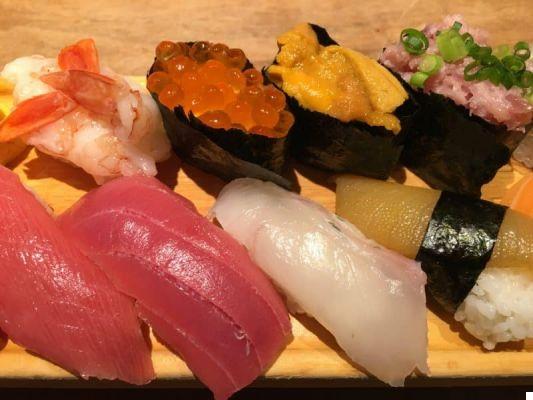
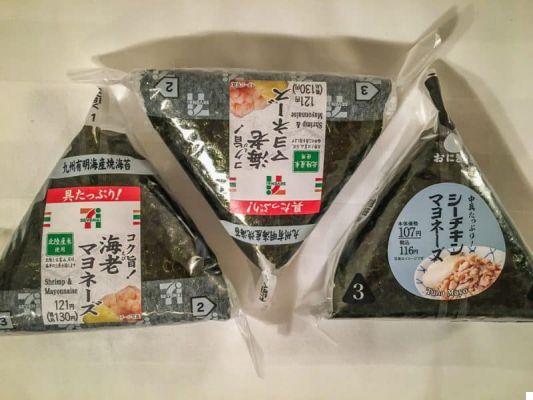
Useful apps for traveling in Japan
- Maps.me: Free offline maps app. I find it very convenient both to write down things before leaving and while traveling.
- Google Maps: very useful for evaluating the movements!
- Google translator (even offline): fundamental, especially the function with the camera.
- Hyperdia: useful for checking the type and timetables of trains
- Official Japanese Tourism Site: it is possible to download different material in pdf (maps, guides, etc.) and where you can find lots of useful information to organize the trip.
You may also be interested in:
- What to see in Tokyo in 3 days (or more)
- How to get around Japan: all you need to know about the Japan Rail Pass, the metro, buses, internal flights and taxis
- How much does a trip to Japan cost?
- Travel to Japan: itinerary between culture and nature




